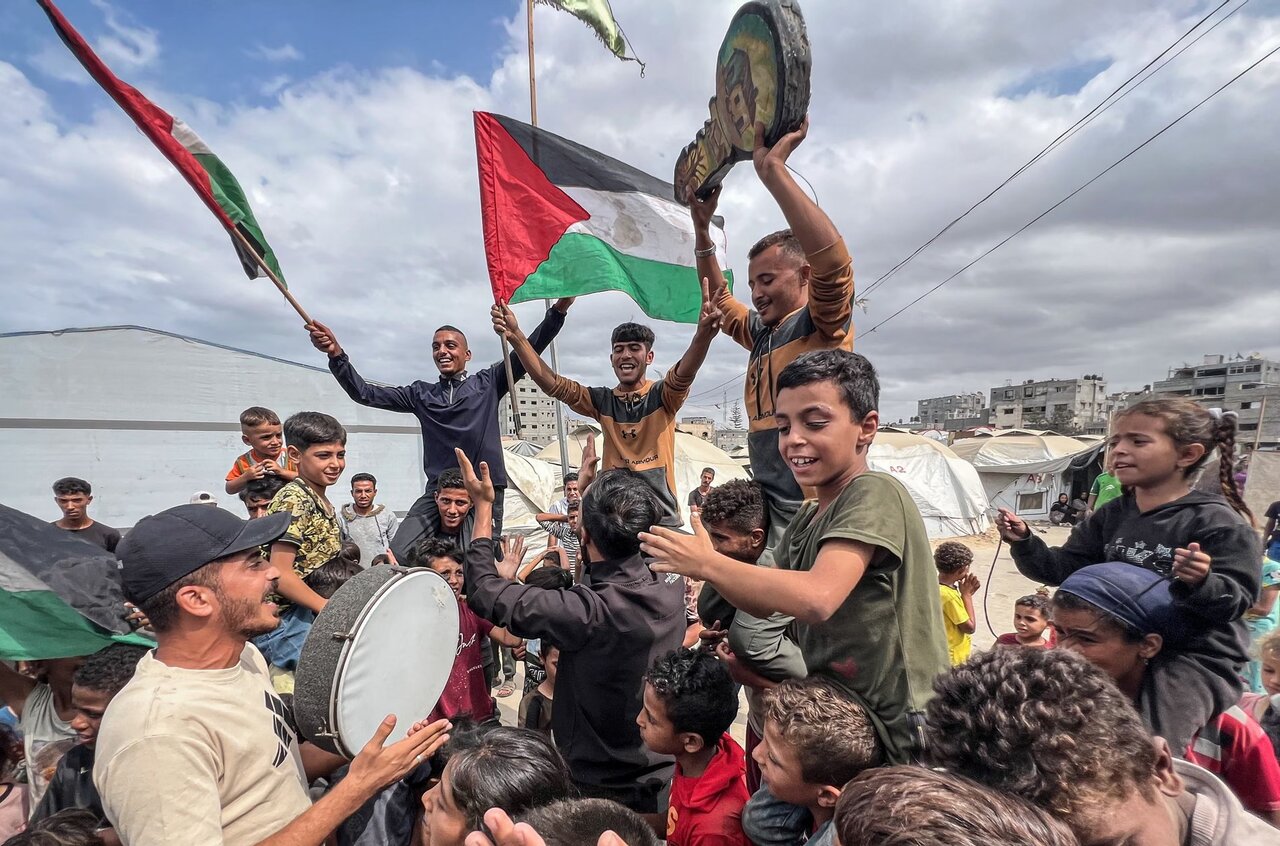Gaza breathes
Displaced Gazans start returning to the north amid uncertain peace

TEHRAN - After two harrowing years of conflict that devastated Gaza and shook the Middle East, a tentative ceasefire has been announced, outlining a phased military withdrawal from the coastal enclave and promising the release of captives and Palestinian prisoners.
Proliferated and brokered by US President Donald Trump’s controversial 20-point peace plan, this ceasefire is an extraordinary diplomatic achievement, but it comes with deep skepticism about Israel's commitment to durable peace and the chance of renewed warfare.
A ceasefire under siege
On October 9, the Israeli regime formally approved the first phase of the ceasefire, brokered through indirect talks in Sharm el-Sheikh mediated by Egypt, Qatar and Turkey. The deal calls for an immediate Israeli troop pullback to an agreed boundary in Gaza, relinquishing control of roughly 47% of the territory to Palestinian authorities.
Hamas, in turn, commits to releasing the remaining Israeli hostages—about 20 believed to be alive—within 72 hours of troop redeployment. In tandem, Israel agreed to free approximately 250 Palestinian prisoners serving life sentences, along with 1,700 detainees arrested amid the recent conflict surge.
Humanitarian corridors opened swiftly, permitting hundreds of trucks laden with food, medicine, and other essentials into Gaza daily to address the dire humanitarian plight. To ensure compliance, a multinational force of some 200 troops from the US, Egypt, Qatar, Turkey, and the UAE will oversee ceasefire adherence, though notably without deploying US troops inside Gaza.
Trump’s 20-point plan faces harsh realities in Gaza ceasefire
At the heart of this agreement lies President Trump’s comprehensive 20-point so-called peace plan, which envisions dismantling Hamas’s military structure, establishing a transitional technocratic government under international supervision chaired by Trump and former UK Prime Minister Tony Blair, and neutralizing Gaza as a precursor to renewed Palestinian governance and eventual statehood talks. Despite international endorsements, the plan faces daunting hurdles.
Gaza’s gains amid fragility
Though partial and precarious, the ceasefire affords Gaza some crucial gains:
• A halt to large-scale Israeli military operations and the start of troop withdrawals in key sectors.
• A significant easing of the blockade, evidenced by a formal agreement opening humanitarian aid channels.
• The release of thousands of Palestinian prisoners, symbolizing a morale boost across Gaza and the broader Palestinian population.
• An opportunity for international oversight and a potential pathway toward governance renewal.
Continued killings cast shadow over peace
Yet, even as the ceasefire was declared, the grim reality on the ground casts doubt on its durability. Reports from humanitarian monitors and hospitals confirm that Israeli airstrikes and shelling continued after the truce’s formal inception. Notably, seven bodies were recovered from a helicopter strike near Gaza’s Al-Ahli Hospital on October 9, a stark reminder of the ongoing violence.
Official figures from the Gaza Health Ministry indicate the Palestinian death toll since the ceasefire began runs into the dozens, including women and children. These casualties underscore a brutal truth: Israel’s aggressive military posture persists despite diplomatic agreements, raising alarm bells about its sincerity in pursuing peace.
Israel’s reluctance and the looming threat of renewed war
Israeli Prime Minister Benjamin Netanyahu has praised the deal as a tactical success, yet his regime’s hawkish elements remain deeply opposed to its concessions. Prisoner releases and military pullbacks are seen by many in Israel as temporary setbacks rather than permanent changes.
Reports of limited Israeli airstrikes continuing after ceasefire approval further magnify questions regarding Israel’s genuine commitment to ending hostilities. The conspicuous absence of US troops from the multinational monitoring force also reflects Israeli mistrust of international presence—signaling a desire to retain control over Gaza’s fate.
Regional and international stakeholders react
The ceasefire received cautious commendation from the United Nations, the European Union, and Arab states, all calling for a sustainable political solution and urgent reconstruction efforts. Egypt’s mediation remains central under intense regional pressure, with neighboring states closely watching for any destabilizing developments.
Hope amidst fragile calm and lingering violence
The Gaza ceasefire is the most hopeful diplomatic development since the brutal hostilities erupted in October 2023. It signals potential relief for Gaza’s war-battered population and a tentative path to normalized survival conditions.
However, the continued killing of Palestinians after the ceasefire starkly reveals Israel’s persistent warlike tendencies and the truce’s fragile nature.
Without tangible moves to address the root causes of the conflict—occupation, blockade, and political disenfranchisement—the aid trucks pour into the enclave and displaced families cautiously return to their shattered homes, the coming weeks will test the strength of this ceasefire and the region’s readiness to opt for peace over perpetual war.
Leave a Comment